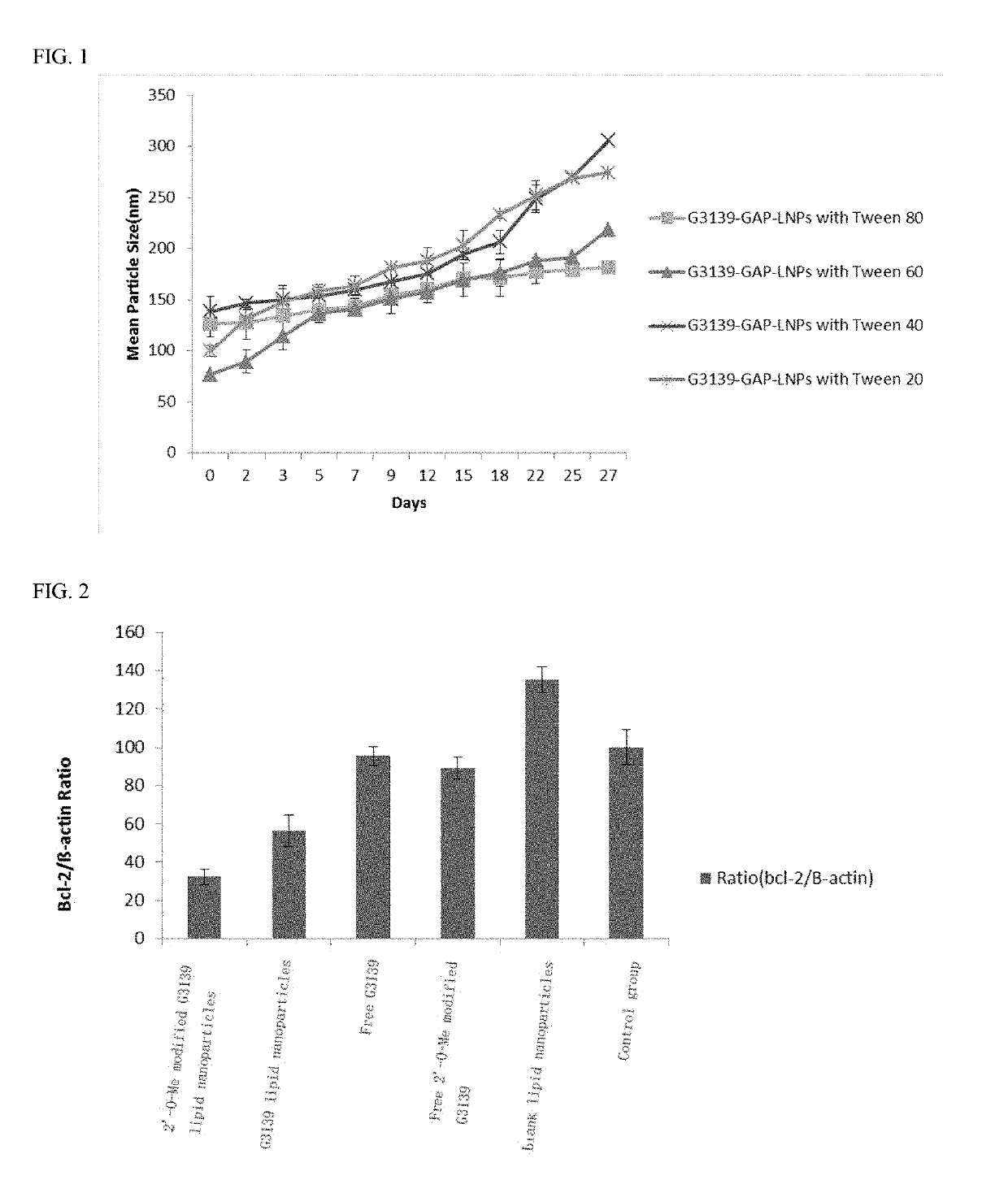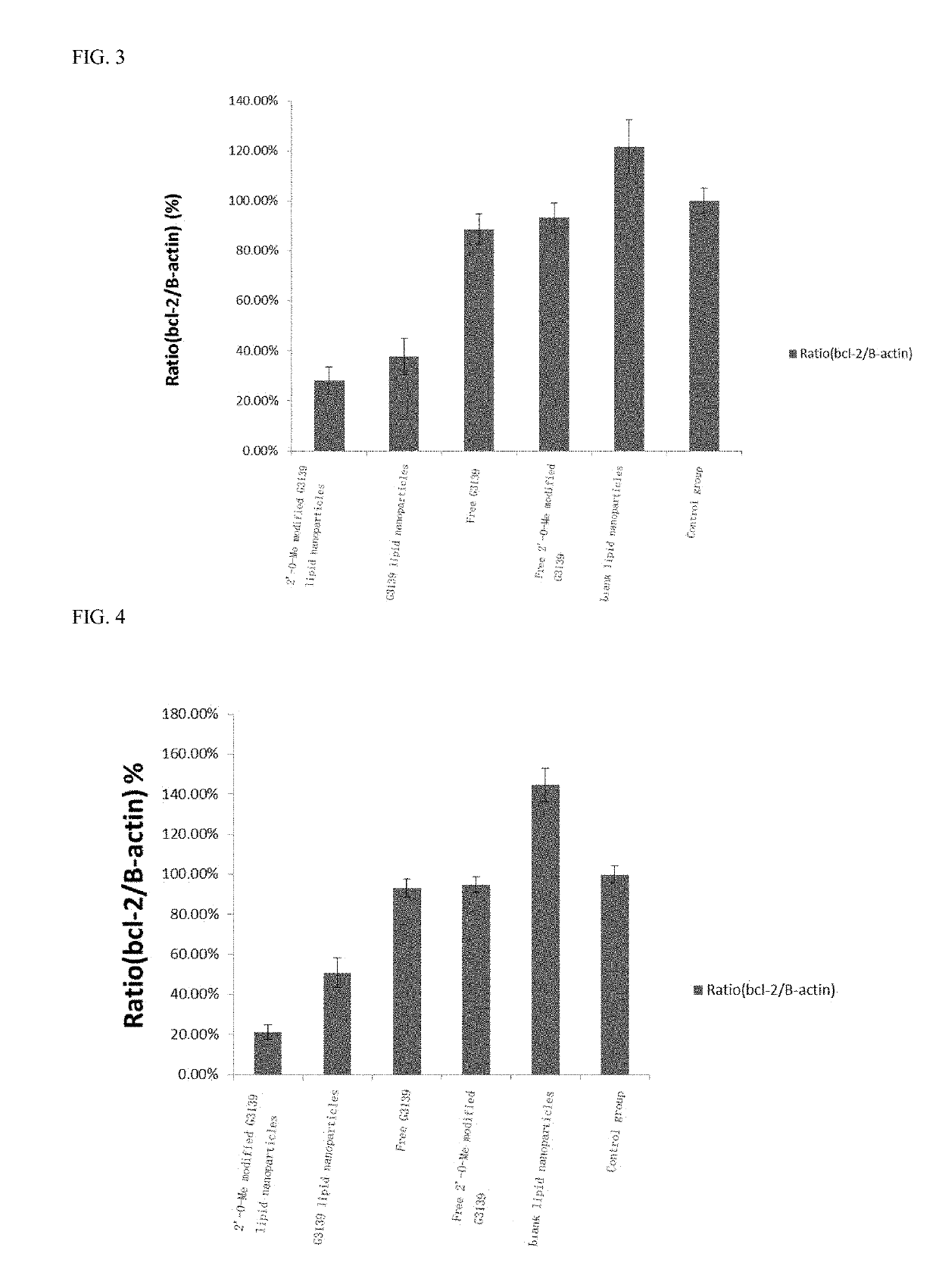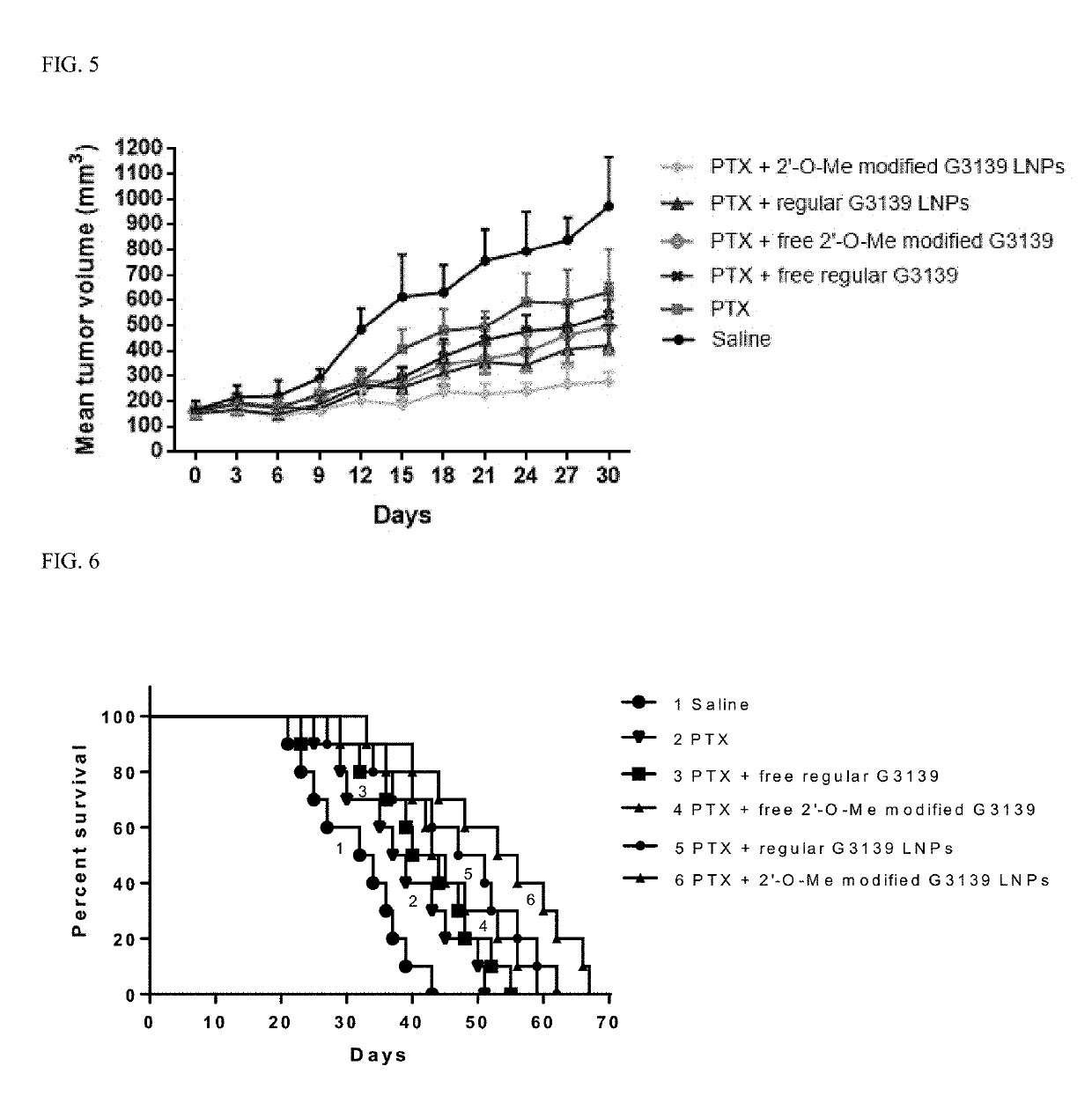A lipid nanoparticle for carrying antisense oligonucleotides inhibiting bcl-2 and method for preparing the same
a technology of antisense oligonucleotides and nanoparticles, which is applied in the field of biotechnology, can solve the problems of difficult to maintain the inhibitory binding effect, difficult to enter cells on their own, and most antisense oligonucleotides lack a suitable drug delivery system, so as to improve the stability of the nanoparticle, promote release, and reduce the possibility of degradation of the drug
- Summary
- Abstract
- Description
- Claims
- Application Information
AI Technical Summary
Benefits of technology
Problems solved by technology
Method used
Image
Examples
example 1
[0072]A method for preparing a lipid nanoparticle for antisense oligonucleotides inhibiting bcl-2, comprising the following specific steps:
[0073](1) dissolving DOTAP, Egg PC, cholesterol, Tween 80, and TPGS in a molar ratio of 25:45:20:5:5 in 80% ethanol to obtain an ethanol solution. Dissolve the antisense oligonucleotide 5′-TCT CCC AGC GTG CGC CAT-3′ (SEQ ID NO: 1) in a PBS buffer (1×pH=7) to obtain an antisense oligonucleotide solution;
[0074](2) mixing the resulting mixed ethanol solution and the antisense oligonucleotide solution in equal volumes to obtain a 40% final ethanol concentration mixed solution;
[0075](3) further diluting the 40% final ethanol concentration mixed solution obtained in step (2) with the PBS solution in equal volume; repeatedly diluting the final ethanol concentration mixed solution with the PBS solution (1×pH=7.4) in equal volume until a preparation mixed solution with a final ethanol concentration of less than 5% is obtained;
[0076](4) adding a high-salin...
example 2
[0079]A method for preparing a lipid nanoparticle for antisense oligonucleotides inhibiting bcl-2, comprising the following specific steps:
[0080](1) dissolving DOTMA, DOPC, Cholesterol, Tween 40, and mPEG2000-DPPE in a molar ratio of 35:40:15:1:1 in 80% ethanol to obtain an ethanol solution. Dissolve the antisense oligonucleotide 5′UCU CCC AGC GTG CGC CAU 3′ (SEQ ID NO: 2) with phosphorothioate modification on the entire chain, modifying both ends by 2′-O-Me and dissolving in a PBS buffer (1×pH=7) to obtain an antisense oligonucleotide solution;
[0081](2) mixing the resulting mixed ethanol solution and the antisense oligonucleotide solution in equal volume to obtain a 40% final ethanol concentration mixed solution;
[0082](3) further diluting the 40% final ethanol concentration mixed solution obtained in step (2) with the PBS solution in equal volume; repeatedly diluting the final ethanol concentration mixed solution with the PBS solution (1×pH=7.4) in equal volume until a preparation ...
example 3
[0086]A method for preparing a lipid nanoparticle for antisense oligonucleotides inhibiting bcl-2, comprising the following specific steps:
[0087](1) dissolving DDAB, DSPC, cholesterol, Tween 60, and mPEG2000-DPPE in a molar ratio of 30:50:25:3:3 in 80% ethanol to obtain an ethanol solution. Dissolve the antisense oligonucleotide 5′UCU CCC AGC GTG CGC CAU 3′ (SEQ ID NO: 2) with phosphorothioate modification on the entire chain, and modifications on both ends by 2′-O-Me, in a PBS buffer (1×pH=7) to obtain an antisense oligonucleotide solution;
[0088](2) mixing the resulting mixed ethanol solution and the antisense oligonucleotide solution in equal volume to obtain a 40% final ethanol concentration mixed solution;
[0089](3) further diluting the 40% final ethanol concentration mixed solution obtained in step (2) with the PBS solution in equal volume; repeatedly diluting the final ethanol concentration mixed solution with the PBS solution (1×pH=7.4) in equal volume until a preparation mixe...
PUM
| Property | Measurement | Unit |
|---|---|---|
| pore size | aaaaa | aaaaa |
| molecular weight | aaaaa | aaaaa |
| molar ratio | aaaaa | aaaaa |
Abstract
Description
Claims
Application Information
 Login to View More
Login to View More - R&D
- Intellectual Property
- Life Sciences
- Materials
- Tech Scout
- Unparalleled Data Quality
- Higher Quality Content
- 60% Fewer Hallucinations
Browse by: Latest US Patents, China's latest patents, Technical Efficacy Thesaurus, Application Domain, Technology Topic, Popular Technical Reports.
© 2025 PatSnap. All rights reserved.Legal|Privacy policy|Modern Slavery Act Transparency Statement|Sitemap|About US| Contact US: help@patsnap.com



